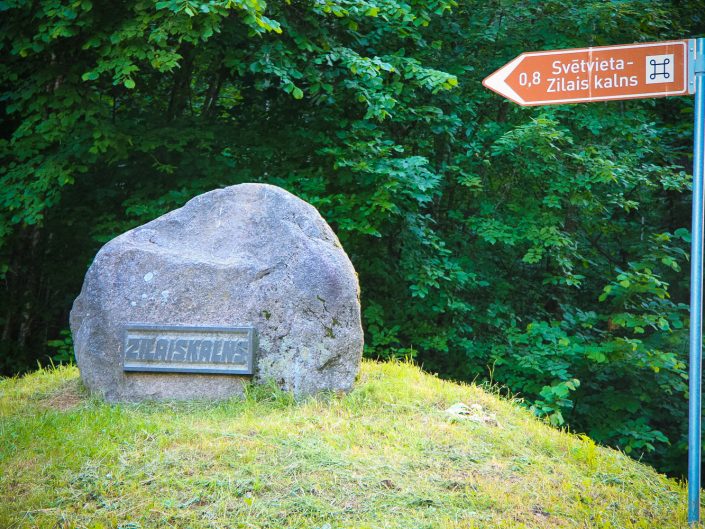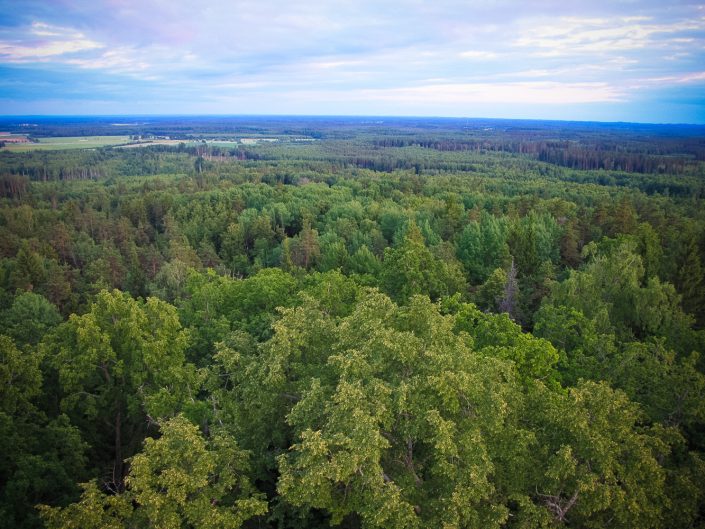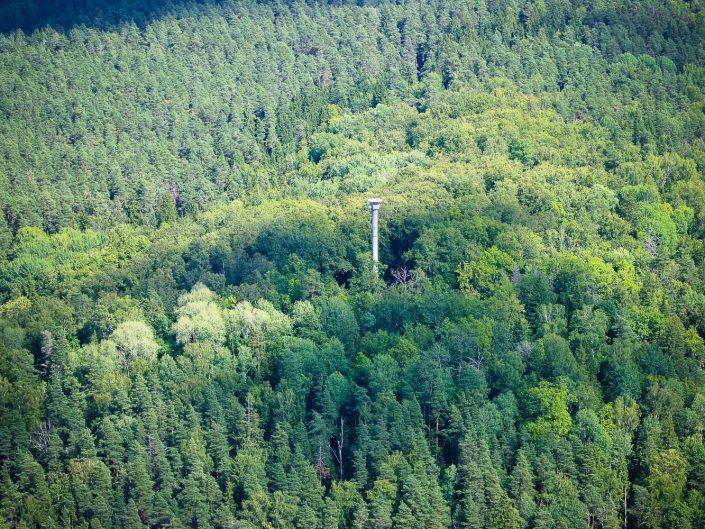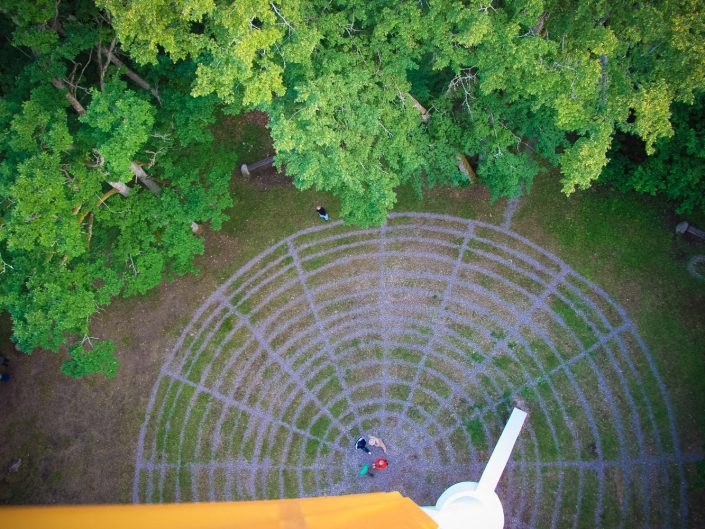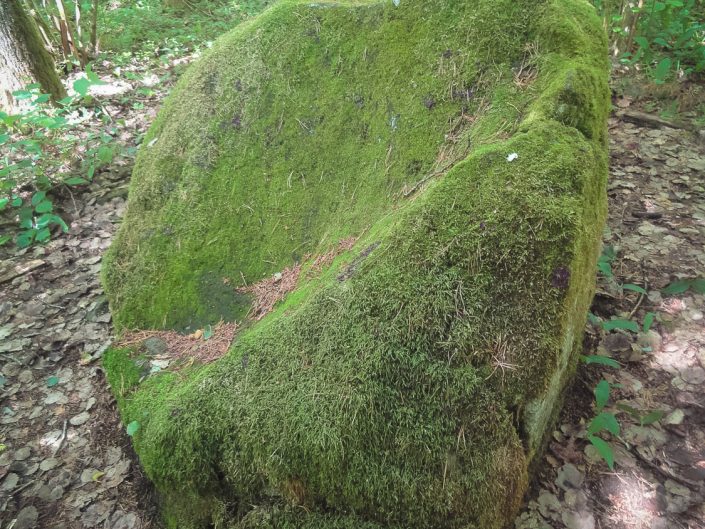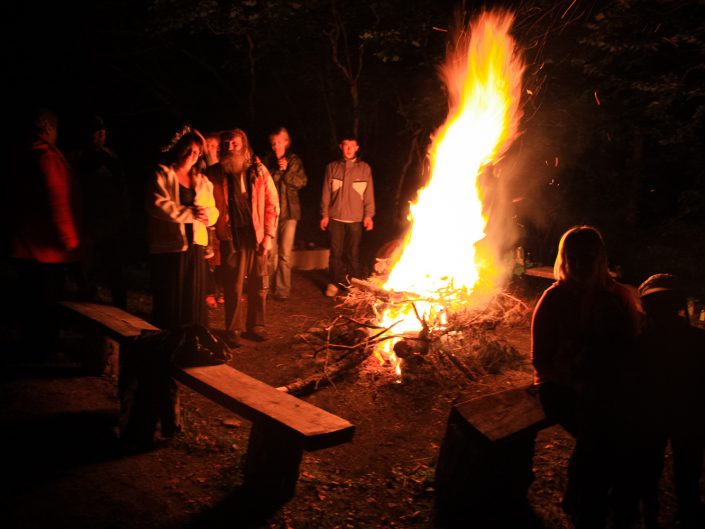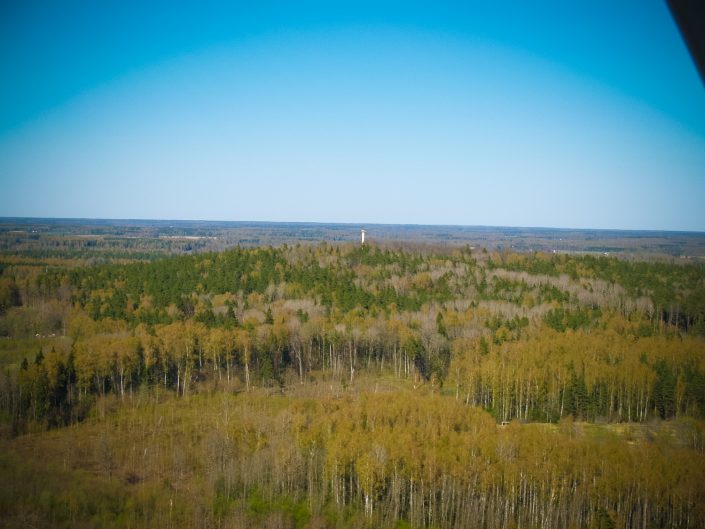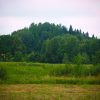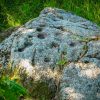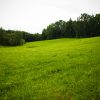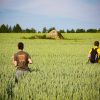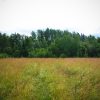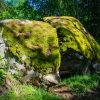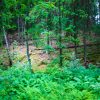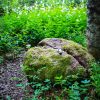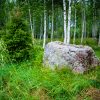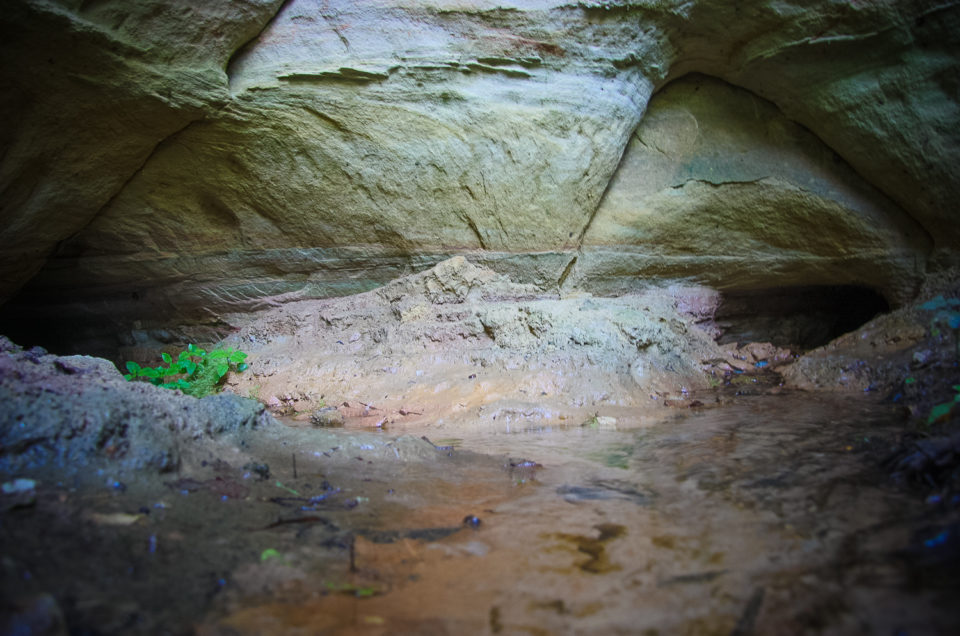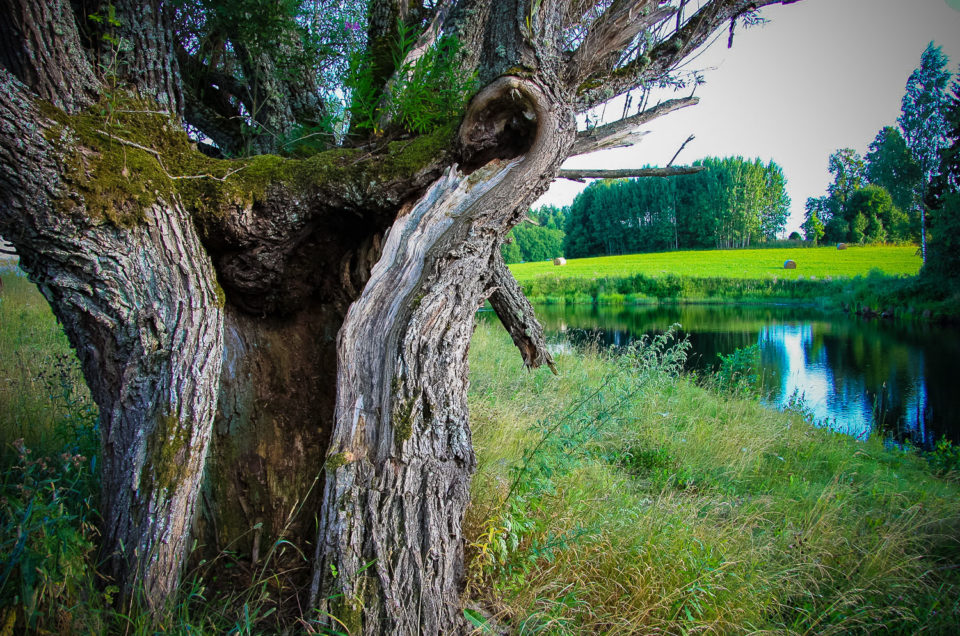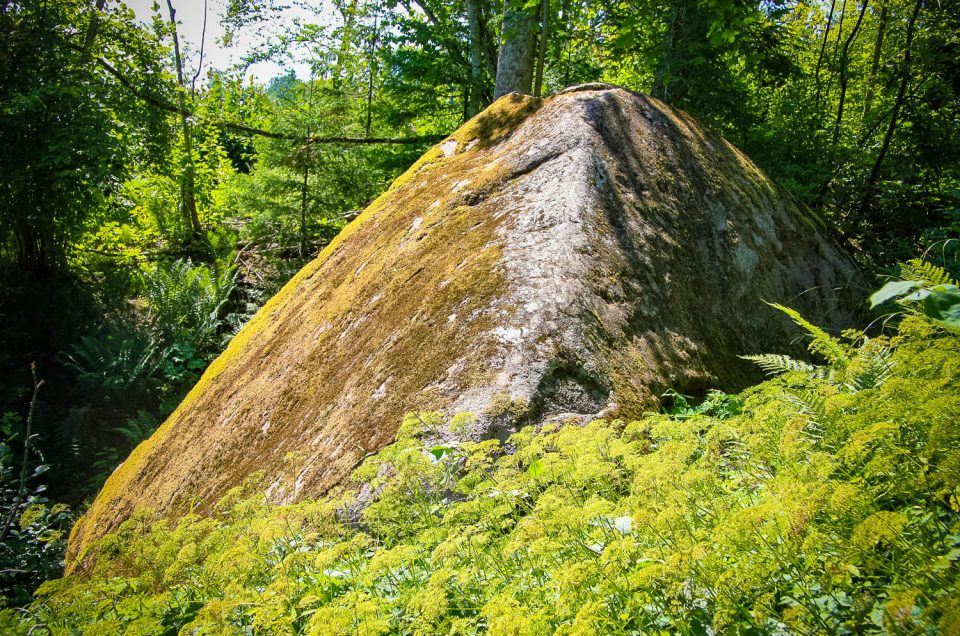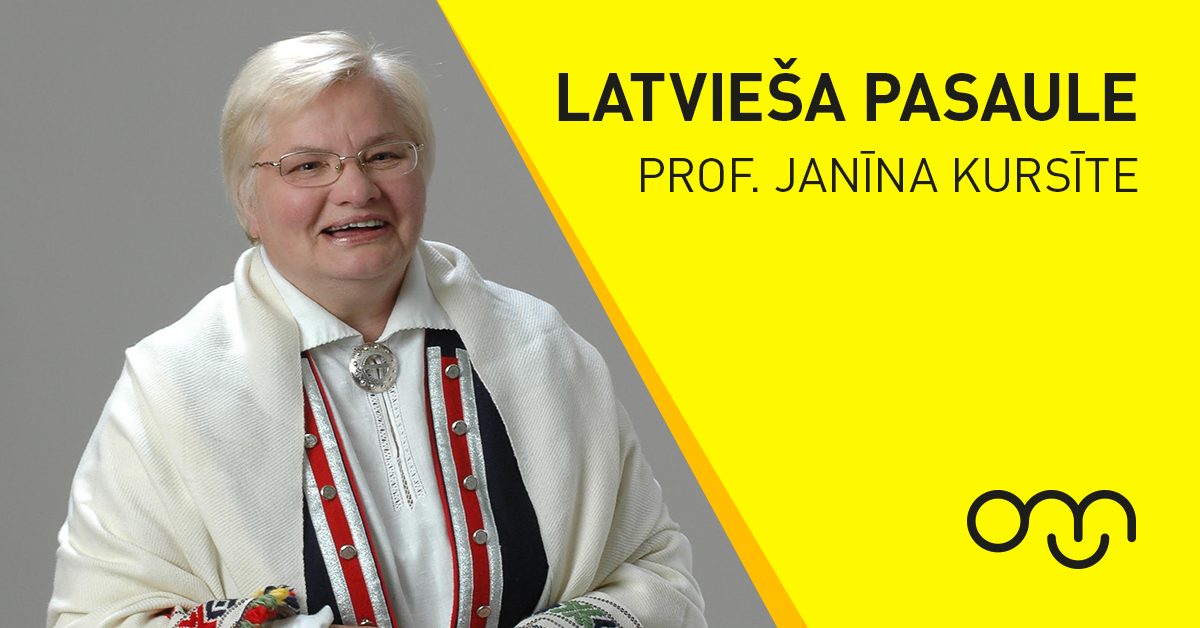State archaeological heritage (State Inspection for Heritage Protection, No 2455. The absolute height of the Zilaiskalns Hill (Blue Hill) is 126.7 m above the sea level and it rises 66.6 m above the surrounding swampy and gently rolling plain. The Zilaiskalns Hill consists of the sand pushed together by the glacier under which there is an admixture of pebbles. In the lowest part of the slopes there is stony sandy loam and scale-like sand gravel pushes. The Zilaiskalns Hill is one of the most significant cult places. Its name is attributed to the slightly blue mist that surrounds the top of the hill. (Vietas Ltd., 2005–2012f, ER). The complex of the Zilaiskalns cult sites consisted of sacred trees, smaller hills, a furrow, spring and cult sites. The individual small hills around the central peak are called Gods’ Hills. Each of them used to have its name, for example, the Sacrificial Hill (Upurkalniņš), Spring Hill (Avotiņkalns), Pebble Hill (Oļu kalns), Jānis’ Hill (Jāņa kalns). Zilaiskalns is a nature reserve that is situated in the Kocēni Parish of the Valmiera County in the total of area of 118 ha (Sokrata Tautskola, 2011–2012, ER). Situated within the nature reserve “Zilaiskalns” and the territory Natura2000. Managed by JSC Latvia’s State Forests.
In folk legends and tales on the Zilaiskalns Hill (the Blue Hill) there used to be a grove where all the people assembled for the Jāņi (Midsummer) Eve. Other festivities were celebrated here as well, and particularly Labrencis’ Day when people came here from various directions to thank the sacred fire. In the epos “Lāčplēsis” (the Bear-Slayer) by poet Andrejs Pumpurs the Zilaiskalns Hill is depicted as the assembly place of all the people. On the Līgo (Midsummer) Eve Lāčplēsis, Laimdota, Spīdala, Lielvārdis and other heroes assembled here. It is also mentioned as a place where witches assemble. Its popularity survived also after the introduction of Christianity. In the 14th century, when commemorating the survival of the Lithuanian Grand Duke Ģediminas after losing his way, a column was erected here. Ģediminas is said to have declared that here there was the border of all the Baltic peoples and placed a stone on the hill. The legend preserved in Mujāni Parish concords with the tale from the Lithuanian part of Sēlija (Selonia) about the Lithuanian governor Ģediminas’ walk along the Salote and Salaca rivers. One of the stones — a sacrifice stone with artificially made hollows – can be still found on the hill. (Valtenberga, 2010). It is believed that the name “Zilaiskalns” is not that much related to the adjective “zils” (blue), but rather to the noun stem “sil” or “zil”, which bears a significant connection to the word “zīlēt”(to tell fortunes) or the Russian word “sila”(power) (Vietas Ltd., 2005–2012f). There, in the highest point of the hill, once used to flow the sacred health spring. When the spring dried up, the young girls of Mujāni planted and attended flowers there. During the Līgo festival, Jāņi (Midsummer Eve) (..) the people assembled there coming both on foot and by horses. They feasted, drank the home-made beer they had taken along, ate cheese and flat cakes, danced, played dancing games and sang. “The Swedes wanted to strengthen their positions in the (Zilaiskalns) Hill and started to dig (dams) and cut trees there and the local people were very worried about it. Then the Father Thunder with the rain spirits came to assist the people and the Swedes had to stop the devastating work. The people, of course, sang praises of the gods who sent the Swedes away.” (K. Bukums, 1974). “My grandmother used to tell me about the Zilaiskalns Hill as a fabulous place. There the people assembled every Midsummer Eve from all surroundings, even far places, to feast. Whoever could, did come, only the old people and small children stayed at home. Sometimes homesteads remained empty as everybody had gone to the Zilaiskalns Hill. Nobody locked the door. Bread, cheese and milk were laid on the table — so that those coming from far away could drop in, have a rest and refresh themselves. On the top of the Zilaiskalns Hill there was a spring which was considered sacred. Once a mother washed her child’s clothes in the spring, for what the spring got angry and disappeared”. (Latvian Folk Tales (Latviešu tautas teikas). 1991)
Many stands, there is a plan to create a watching tower of the Latvia’s State Forests company here.
Extra materials:
Contains information from the project:

Added by
www.latvijas-pilskalni.lv, www.senvietas.lv un hillforts.eu izveidotājs un uzturētājs.
